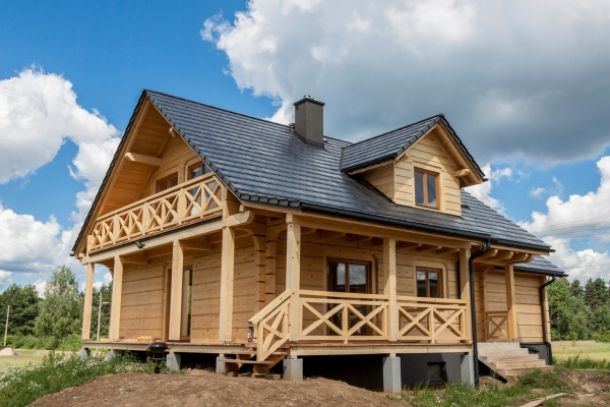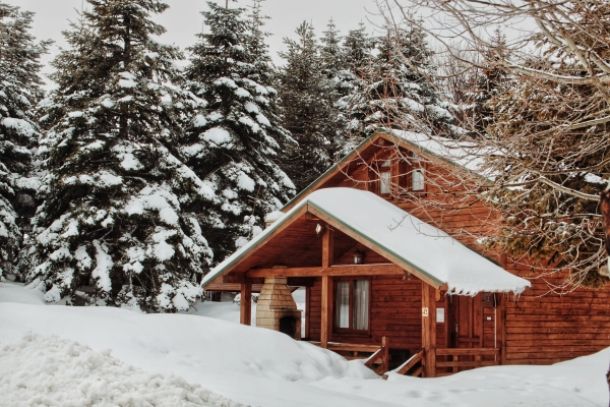Home-Built Wooden Houses: A How-To Guide
Home-Built Wooden Houses: A How-To Guide
Home-built wooden houses offer a unique opportunity to take control of your living space, combining practicality with the charm of natural materials. “Home-Built Wooden Houses: A How-To Guide” is crafted for those eager to construct their own homes, providing a detailed, step-by-step roadmap from initial planning to the final touches. This comprehensive guide covers essential aspects of DIY construction, including design, material selection, construction techniques, and maintenance, empowering you to build a wooden house that is both durable and distinctly personal.
Introduction
The appeal of home-built wooden houses lies in their blend of sustainability, affordability, and the satisfaction derived from creating a space with your own hands. This guide is designed to help DIY enthusiasts navigate the often complex process of building a wooden house. With practical advice, detailed steps, and expert tips, you’ll be equipped to overcome challenges and transform your vision into a reality.
Initial Planning and Preparation
Defining Your Vision and Goals:
Begin by conceptualizing your ideal home. Consider your lifestyle, needs, and the overall aesthetic you want to achieve. Draft preliminary sketches or floor plans to visualize the layout, room sizes, and architectural style. This initial phase sets the foundation for all subsequent steps.
Budgeting and Resource Management:
Develop a detailed budget that includes costs for materials, tools, permits, and contingencies. Home-built projects often require a flexible approach to finances—unexpected expenses can arise, so a contingency fund is essential. Research local suppliers and consider sustainable, cost-effective materials.
Permits and Legal Considerations:
Before construction begins, ensure that your plans comply with local building codes and zoning regulations. Obtain all necessary permits to avoid legal issues later on. Consulting with local authorities or experienced builders can provide valuable insights into regulatory requirements.
Material Selection and Sustainable Practices
Choosing Quality Wood:
The quality of the wood used is critical to the longevity of your home. Options like cedar, pine, or reclaimed wood are popular choices due to their durability and natural beauty. Ensure that the wood is properly seasoned and treated to resist moisture, pests, and decay.
Eco-Friendly Options:
Incorporate sustainable practices by opting for certified wood or reclaimed materials. Additionally, use eco-friendly insulation and finishes to reduce the environmental impact of your home-built project. Sustainable materials not only benefit the environment but can also improve the overall energy efficiency of your home.
Building the Structure: From Foundation to Framing
Laying a Solid Foundation:
A robust foundation is crucial for any home. Choose a foundation type that suits your local soil and weather conditions—whether it’s a concrete slab, pier and beam system, or another method. Proper site preparation and drainage are essential to prevent future structural issues.
Framing the House:
Once the foundation is in place, the framing process begins. Use high-quality, treated lumber to construct the framework of your wooden house. Precision is key—accurate measurements and cuts ensure that the structure is square and stable. Modern tools like laser levels and digital measuring devices can greatly enhance the accuracy of your work.
Incorporating Openings and Supports:
Plan for door and window openings early in the framing process. Reinforce these areas with additional supports to maintain the overall integrity of the structure. Thoughtful placement of windows and doors also contributes to energy efficiency and the overall aesthetic of the home.
Insulation, Roofing, and Energy Efficiency
Enhancing Thermal Performance:
Proper insulation is vital to maintaining a comfortable indoor environment. In addition to the natural insulating properties of wood, consider installing additional insulation in walls, roofs, and floors. Energy-efficient windows and doors further enhance thermal performance, reducing reliance on heating and cooling systems.
Roofing Considerations:
Select a roofing system that complements your wooden structure while providing durable protection against the elements. Whether you opt for traditional wooden shingles or modern metal roofing, ensure that the roof is installed with meticulous care to prevent leaks and moisture buildup.
Interior Finishing and Customization
Bringing Your Vision to Life:
The interior of a home-built wooden house is where your personal style truly comes to the forefront. Choose finishes that enhance the natural warmth of wood, such as natural stains, eco-friendly paints, and handcrafted fixtures. Custom-built cabinetry, unique lighting solutions, and carefully selected furnishings can transform a functional space into a home that reflects your individuality.
Detailing and Craftsmanship:
Pay close attention to the small details—trim work, built-in shelves, and accent walls all contribute to the final look. Investing time in these finishing touches not only improves aesthetics but also increases the overall quality and value of your home.
Long-Term Maintenance and Sustainability
Routine Care:
A home-built wooden house requires regular maintenance to ensure longevity. Establish a maintenance schedule that includes inspecting for signs of wear, moisture, and pest activity. Regular upkeep such as resealing wood surfaces and cleaning gutters is essential to preserve the integrity of the structure.
Adapting to Future Needs:
Design your home with flexibility in mind. A well-built wooden house can be adapted or expanded as your needs change over time. Incorporating sustainable and energy-efficient features not only reduces your environmental footprint but also lowers long-term operating costs.
Conclusion
Building your own wooden house is a journey that requires careful planning, quality materials, and a commitment to craftsmanship. “Home-Built Wooden Houses: A How-To Guide” provides a comprehensive roadmap for every stage of the process, from initial concept to final finishing touches. By following these detailed steps and embracing sustainable practices, you can create a wooden home that is as durable as it is beautiful—a true reflection of your skills and vision. With patience, precision, and passion, your home-built wooden house will stand as a lasting testament to the art of DIY construction.


